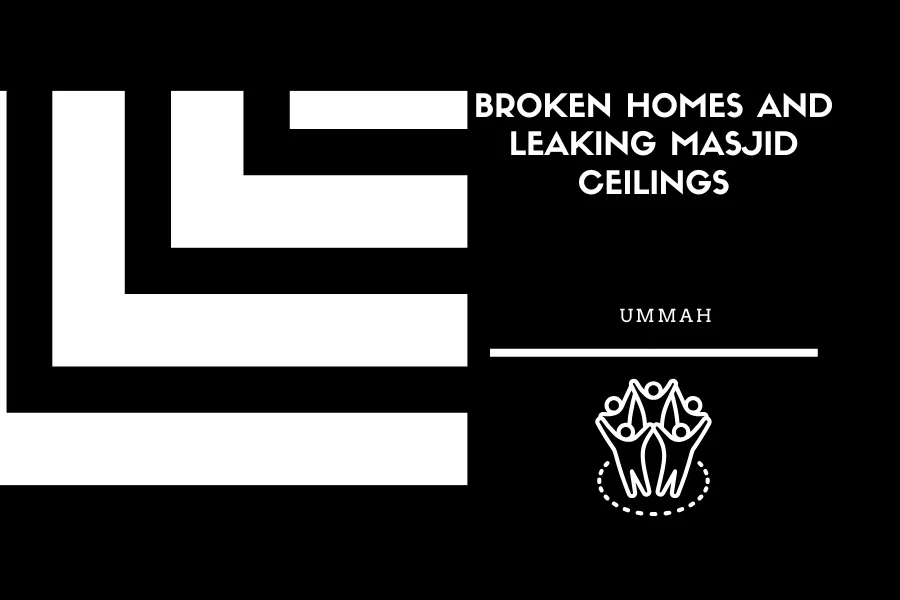
Broken Homes and Leaking Masjid Ceilings
Broken Homes and Leaking Masjid Ceilings
From the East Coast to the West Coast, the struggle repeats itself—indigenous Black Muslims facing the same pain. If Muslims are brothers, why then is the gap in community development so wide? Two of the most painful markers of indigenous Black Muslim communities in America are broken homes and leaking masjid ceilings—both figuratively and literally. These issues go hand in hand: the underdevelopment of manhood and the underdevelopment of our masjids. These twin crises share the same root cause—a destructive pipeline: the prison system, marked by child support burdens, systemic incarceration, and toxic gender role manipulation—that steadily drains the strength needed for community growth.
The first crisis is fatherlessness. But it's not just about presence—it's about proper upbringing. Too many fathers are absent, inconsistent, or unequipped to nurture. This quiet crisis is a legacy of systemic destruction, generational trauma, and manipulated gender roles. The prison pipeline, poverty, and discriminatory social policy all tie into this cycle, leaving generations raised in dysfunction and emotional instability. Many carry wounds that bleed into our brotherhood, cripple trust, and distort our sense of manhood. Without strong fathers and mentors, the building blocks of community remain fractured.
The second crisis is property insecurity. While immigrant Muslim communities construct multimillion-dollar centers, indigenous Muslims are still renting in plazas and storefronts—sometimes for decades. And when we do own, the struggle continues: leaking roofs, failing plumbing, no room to expand, no proper parking. These challenges are rooted not in laziness but in systemic poverty, lack of institutional wealth, and blocked access to generational planning. Where others arrived with blueprints, we are still sketching ours in the margins.
Many of our non-indigenous brothers, especially those from professional and middle-class backgrounds, come from different networks—families with educational stability, business connections, and institutional knowledge that make community building more accessible. While immigrant communities often have established pathways for pooling resources and institutional development, indigenous communities face the prison pipeline that systematically drains our human and financial capital. These different starting points create resource gaps that affect how quickly and effectively communities can build institutions, even when we share the same faith.
There needs to be two shifts in perception.
First, for non-indigenous Muslims: when you see a sister's prayer area squeezed into a corner, the size of a closet, and a wudu station leaking and smaller than a child’s bathroom, understand it as more than neglected maintenance. It is memory and history, a reminder of the missing pipelines that bring communal flow. And it is the urgent call to restore more than walls—we must restore true Islamic brotherhood.
Second, for indigenous Muslims: we must use īmān to see each other as brothers in faith, overcoming the pipelines of oppression and reconnecting with the deeper resilience we inherited from generations before us.
The broken home and the leaking masjid are not just mirrors of one community—they are a test for the greater ummah. True Islam, true brotherhood, is what rectifies both manhood and social inequalities. This reality is affirmed in the words of the Prophet (ﷺ): "A believer to another believer is like a building whose different parts support each other," as he clasped his hands with fingers interlaced.
And Allah is sufficient as a Protector and Controller of affairs.
TAKE ACTION
For practical steps to bridge these gaps and build stronger communities, download: "Beyond the Gaps: Concrete Steps for Muslim Community Unity" - an action sheet with specific ways to support indigenous Muslim communities and implement meaningful change.